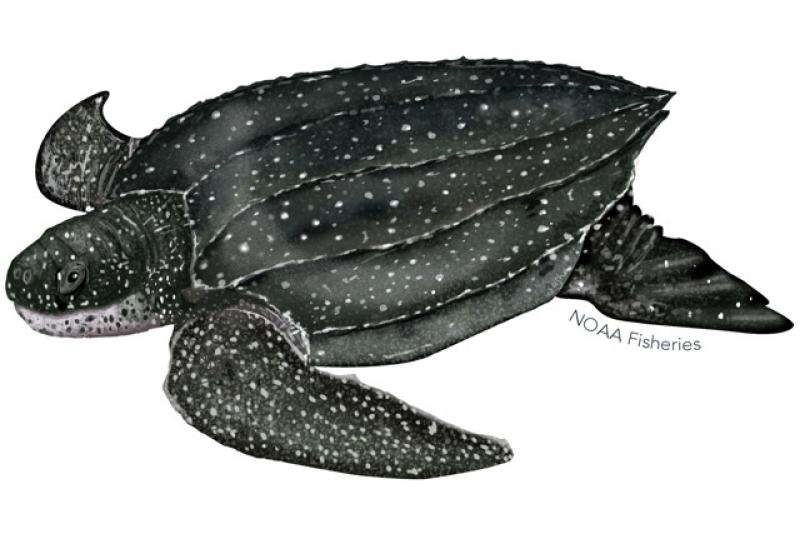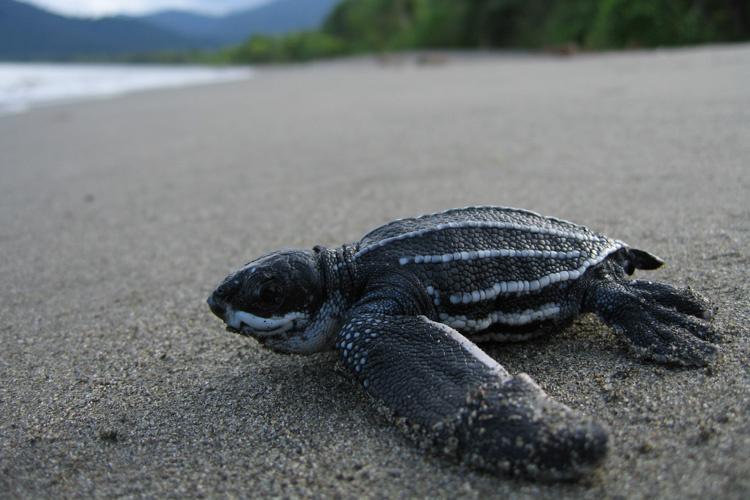Yes, Leatherback Sea Turtles are considered endangered due to various threats to their population. Now let’s delve deeper into the reasons behind their endangered status and the efforts being made to protect them.
Leatherback Sea Turtles (Dermochelys coriacea) face numerous challenges that have led to their classification as an endangered species. These magnificent creatures, known for their unique leathery shells and remarkable size, are highly susceptible to the impacts of human activities and a changing environment.
Factors contributing to their endangered status include habitat loss, pollution, climate change, entanglement in fishing gear, and poaching. Due to their pivotal role in maintaining healthy marine ecosystems, conservation organizations, governments, and concerned individuals are working tirelessly to protect and restore Leatherback Sea Turtle populations. Efforts range from implementing protective legislation and supporting nesting beach conservation programs to promoting sustainable fishing practices and raising public awareness about these vulnerable creatures. Through collaborative initiatives and dedicated conservation efforts, there is hope for the recovery and survival of the endangered Leatherback Sea Turtles.

Credit: www.nwf.org
Status Of Leatherback Sea Turtles
Status of Leatherback Sea Turtles:
The leatherback sea turtle (Dermochelys coriacea) is the largest species of sea turtle, but sadly, its population has been experiencing a significant decline. These majestic creatures are listed as critically endangered by the International Union for Conservation of Nature (IUCN).
Population Decline:
The decline in leatherback sea turtle populations is a cause for concern. Over the past few decades, the numbers have dropped across their entire range. In the Pacific Ocean, a decline of approximately 97% has been observed since the 1980s. Factors contributing to this decline include:
- Loss of nesting habitats due to coastal development
- Accidental capture in fishing gear
- Pollution and climate change affecting their food sources and nesting habitats
Threats to Leatherback Sea Turtles:
| Threats | Impact |
|---|---|
| Entanglement in fishing gear | Potential injury or death |
| Coastal development | Loss of nesting grounds |
| Pollution | Contamination of their food sources |
| Climate change | Rising temperatures and sea levels affecting nesting habitats |
Efforts are underway to conserve and protect leatherback sea turtles. Awareness campaigns, coastal zone management, and the implementation of fishing regulations are crucial to safeguarding these magnificent creatures and reversing their decline.

Credit: www.fisheries.noaa.gov
Conservation Efforts
Leatherback sea turtles are critically endangered marine species, and international agreements and legislation play a crucial role in their conservation. Various international organizations have come together to protect these majestic creatures, adopting strict measures to ensure their survival.
| International Agreements and Legislation | Protective Measures and Initiatives |
|---|---|
| CITES (Convention on International Trade in Endangered Species of Wild Fauna and Flora) has listed leatherback turtles in Appendix I, prohibiting their commercial trade. | The establishment of protected areas and marine parks has contributed significantly to protecting nesting beaches and foraging grounds. |
| The Inter-American Convention for the Protection and Conservation of Sea Turtles (IAC) promotes regional cooperation and research. | Beach patrols safeguard turtle nests from predation and poaching, while hatcheries increase survival rates of eggs. |
| The United Nations Convention on the Law of the Sea (UNCLOS) ensures the conservation and sustainable use of marine resources, including sea turtles. | Bycatch reduction measures have been implemented to minimize accidental capture in fishing nets and longlines. |
These international agreements and legislation, combined with the implementation of protective measures and initiatives, offer hope for the survival of leatherback sea turtles. Continued efforts and awareness are necessary to ensure their long-term existence in our oceans.

Credit: portal.ct.gov
Conclusion
The leatherback sea turtle is indeed endangered, facing multiple threats that put its survival at risk. Human activities such as pollution, habitat destruction, and poaching significantly contribute to the declining population of these magnificent creatures. It is crucial for us to take immediate action to protect their nesting sites, reduce plastic waste, and raise awareness about their conservation.
Together, we can make a difference in preserving the leatherback sea turtles for future generations to admire and cherish.






Leave a Reply